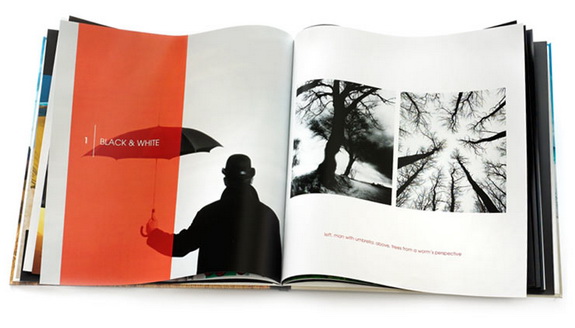 DESIGNERS. A new guide entitled “Creating and Presenting a Powerful Portfolio” can help you avoid some common mistakes when presenting your work to advertising a marketing executives. The guide was produced by The Creative Group, a specialized staffing service for creative professionals.
DESIGNERS. A new guide entitled “Creating and Presenting a Powerful Portfolio” can help you avoid some common mistakes when presenting your work to advertising a marketing executives. The guide was produced by The Creative Group, a specialized staffing service for creative professionals.
To identify the most common mistakes, The Creative Group commissioned an independent research firm to conduct a national survey of advertising and marketing executives.
The number-one complaint voiced by survey respondents was that portfolios that showed more style than substance. Thirty-two percent of advertising and marketing executives interviewed said the biggest misstep creative professionals make when assembling their portfolios is including samples that don’t show value provided to the company. Lack of organization was the second most common blunder, cited by 19 percent of respondents.
The chart below shows how advertising and marketing executives responded when asked, “In your opinion, which of the following is the single most common mistake creative professionals make when assembling a portfolio that will be presented to a potential employer?”

“Creative professionals often think their work speaks for itself and, unfortunately, it doesn’t,” said Donna Farrugia, executive director of The Creative Group. “Compelling design has a story behind it, and it’s vital for job seekers to provide that narrative so employers can see how they think and solve business problems.”
The Creative Group offers four tips for building and presenting a portfolio that demonstrates value to potential employers:
Prepare. Before meeting with a hiring manager, research the organization to assess its particular needs and which work samples might best address them. Also, ask the prospective employer about the format of the portfolio review process. For example, find out how long you’ll have to present, how many people will be in attendance and whether they prefer to review hard-copy or online samples.
Paint a clear picture. Make it easy for reviewers to evaluate your book and recognize what you can bring to the company. Label each piece with the client’s name (assuming you have their permission), project objective, your role, and any positive outcomes.
Talk the talk. Presenting your work confidently and intelligently can make hiring managers take a second look at samples they may otherwise have missed. Develop short, engaging sound bites that tell the story of how each piece solved a business problem or filled a specific need. Don’t be afraid to show enthusiasm and passion for your work.
Take it for a test run. Before you officially present your book, turn to a trusted colleague, mentor or member of your professional network for feedback. Consider using social media sites to solicit critiques from your online contacts. This can help you fine-tune the content and delivery of your portfolio.
About the Survey
The national study was developed by The Creative Group and conducted by an independent research firm. It is based on more than 500 telephone interviews — approximately 375 with marketing executives randomly selected from companies with 100 or more employees and 125 with advertising executives randomly selected from agencies with 20 or more employees.
About The Creative Group
The Creative Group specializes in placing a range of highly skilled interactive, design, marketing, advertising and public relations professionals with a variety of firms on a project and full-time basis. More information, including online job-hunting services, candidate portfolios and The Creative Group’s award-winning career magazine, can be found at www.creativegroup.com.
LINKS
Free Guide: Creating and Presenting a Powerful Portfolio
RELATED POSTS
The Creative Group Publishes 2011 Salary Guide
Report Describes the Creative Team of the Future
 If you would like a customized case for the iPad you use as a portfolio or business presentation tool, check out the personalization options available for the Casemodo line of cases.
If you would like a customized case for the iPad you use as a portfolio or business presentation tool, check out the personalization options available for the Casemodo line of cases.





